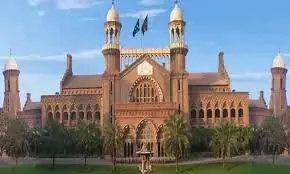India narrows budget gap in pre-election budget; pledges reforms to spur growth
India will reduce its budget gap sharply in 2024-25 and focus on infrastructure and long-term reforms to drive growth, Finance Minister Nirmala Sitharaman said on Thursday as the government presented its last budget before a national election due by May.
India’s economy, the fastest growing among major nations, is going through profound change, Sitharaman said to the thumping of desks in parliament.
“The next five years will be years of unprecedented development and golden moments to realize the dream of developed India by 2047,” Sitharaman said.
She said the next generation of reforms will be carried out in consultation with state governments. The government has simplified India’s complicated tax structures, and invested in new ports and roads but has struggled to liberalise land acquisition and labour laws.
Sitharaman did not spell out the proposed reforms.
The government resisted any large giveaways and said it would reduce its fiscal deficit to 5.1% of GDP in 2024-25 from 5.8% this year.
Over the last three years, the government has stepped up spending on roads, bridges and other infrastructure as a way to boost the economy and create jobs.
The budget foresees an increase in capital expenditure on such long-term projects by another 11% over last year to 11.1 trillion Indian rupees ($133.80 billion), even as the government’s overall spending rises at a slower 6%.
The pace of increase in capital spending is lower than in the previous year. The federal government will also provide 1.3 trillion Indian rupees in long-term loans to states to spend on infrastructure.
Tax policies were left unchanged.
Modi is leading the election race by a distance because of his personal popularity and the government is under little pressure to announce populist schemes, analysts say.
There are weak spots in the economy, though. While India’s economic growth is expected to notch a record-beating 7.3% pace for the financial year ending March 31, 2024, consumption - which accounts for close to 60% of GDP - has remained weak with growth at just over 4%.
Weak growth in wages and high inflation have hurt lower-income earners, particularly in rural areas, impacting their ability to spend on even items of daily use.
Sitharaman said the government will build 20 million affordable houses in the next five years, to add to the 30 million houses built already.
The government will also launch a scheme for housing for the middle class, she said, without providing details.
The government will borrow a lower-than-expected 14.13 trillion Indian rupees ($170.33 billion) from the bond markets to fund its fiscal deficit.
The Indian benchmark 10-year bond yield, dropped to over six-month lows after the fiscal deficit target and gross borrowing plan came in lower than estimates.
Elsewhere, market reaction to the budget was muted, with both stock benchmarks BSE Index (.BSESN), opening a new tab and the wider NSE Nifty 50 index <.NSEI> trading little changed. The Indian rupee briefly rose to 82.9325 to the U.S. dollar compared with 82.9800 before the budget.
($1 = 82.9575 Indian rupees)
For the latest news, follow us on Twitter @Aaj_Urdu. We are also on Facebook, Instagram and YouTube.





















Comments are closed on this story.